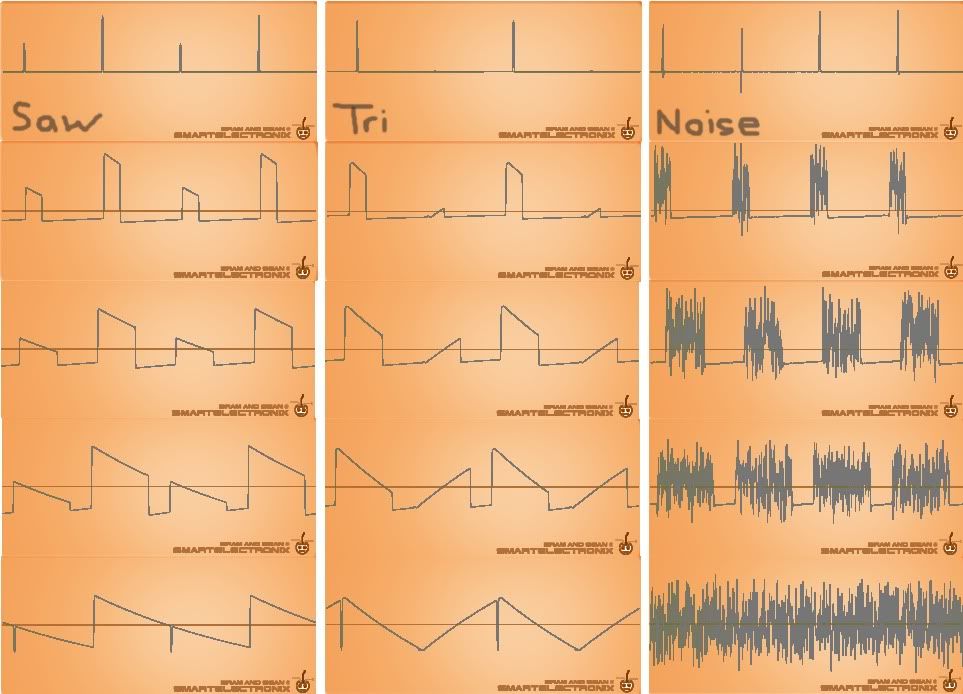Initially it looks like a saw wave ring modulated by octave higher pulse. But not quite
Any tips?
My observations:
- Segments have variable steepness, depending on pulse width. Lower part looks like it's low pass filtered - nonlinear filtering?
- Initial saw is rounded - this could be effect of low shelving or ring modulated sine - but it's not, it ends up as a straight line.
- Maybe 'integrated signal' in DCO is stopped during negative pulses?





